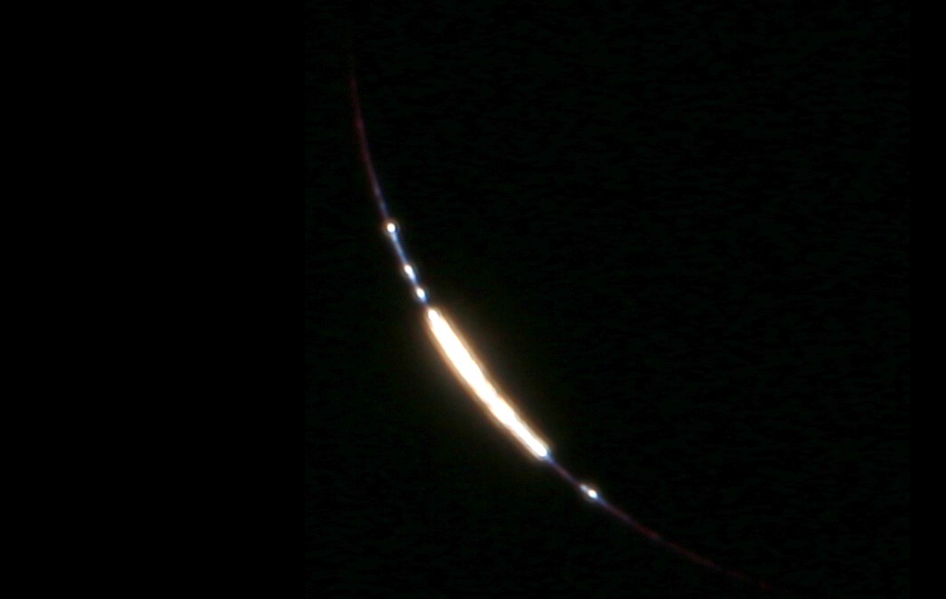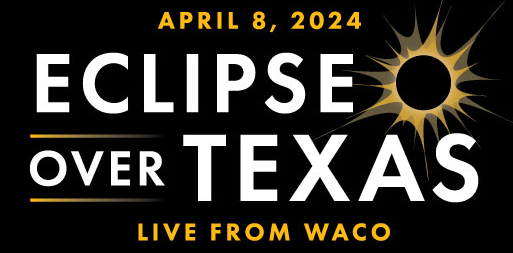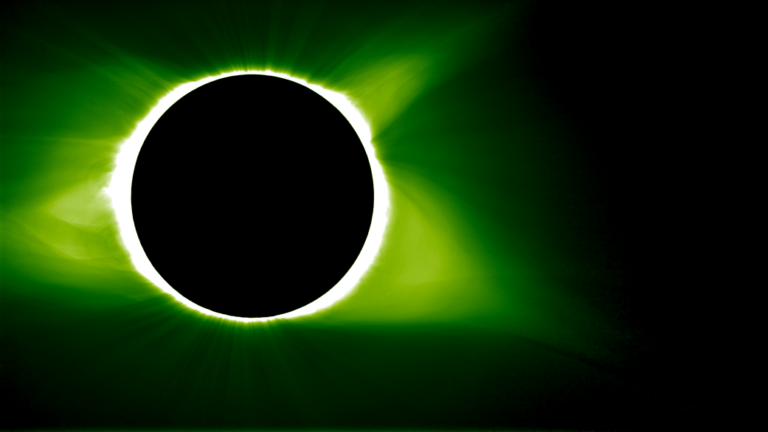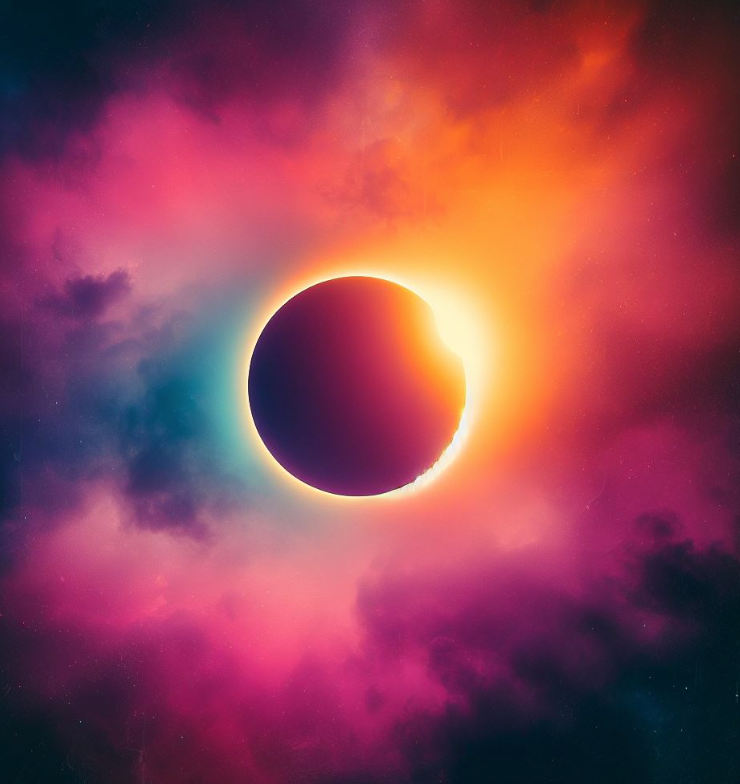During the totality of the 2024 total solar eclipse, viewers will enjoy the rare opportunity to see the Sun’s corona, a complex region of extremely hot plasma extending far above the solar surface. But this won’t be the only unusual thing to see, as the first and last moments of the eclipse will be marked by two brief spectacular phenomena— Baily’s Beads and the Diamond Ring Effect.
Leading up to totality, the Moon gradually moves in front of the Sun. Just before completely blocking it, a few rays of the Sun shine through valleys and other irregularities on the lunar limb (the edge of the Moon, as seen from Earth), resulting in a few bright beads of light called Baily’s beads. This feature is named after English astronomer Francis Baily, who in 1836 explained the nature of the phenomena. As with many cases in science, Baily was not the first person to observe or explain the effect; that honor goes to Baily’s countryman Edmond Halley in 1715.
The beads will be visible for only a short time; the last one glows brightly and looks like the diamond on a ring, and is thus known as the Diamond Ring Effect. Later, as the Sun comes out of eclipse, the Diamond Ring Effect and Baily’s Beads will again be visible. Both Baily’s Beads and the Diamond Ring Effect are short-lived but dramatic and worth seeing.
Diamond Ring effect:
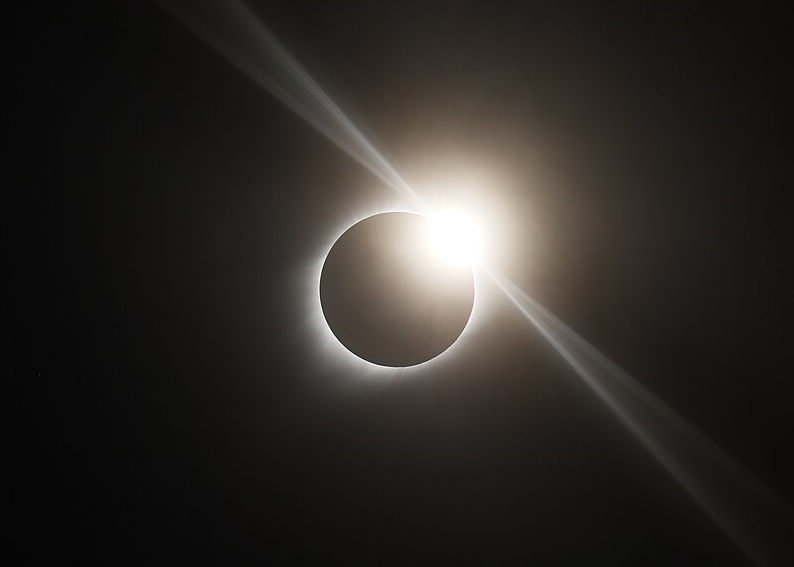
Baily’s Beads effect:
